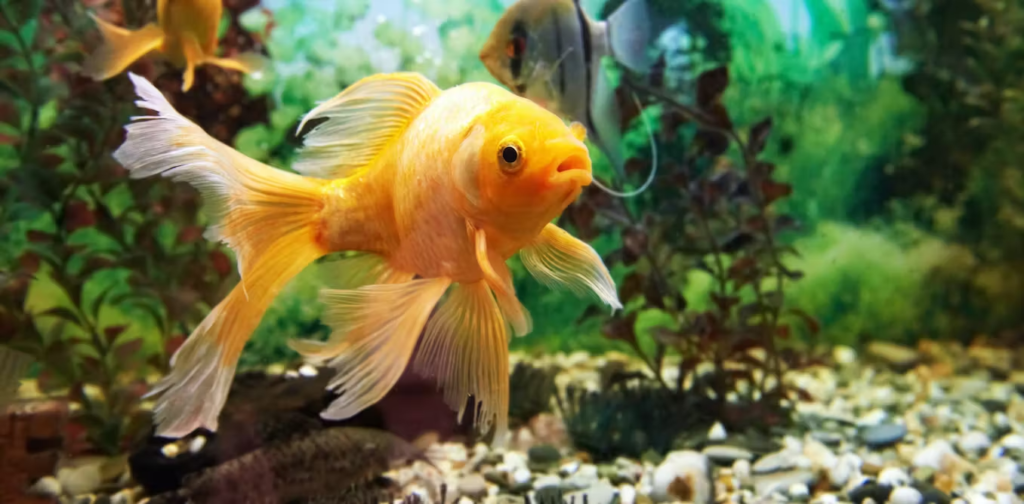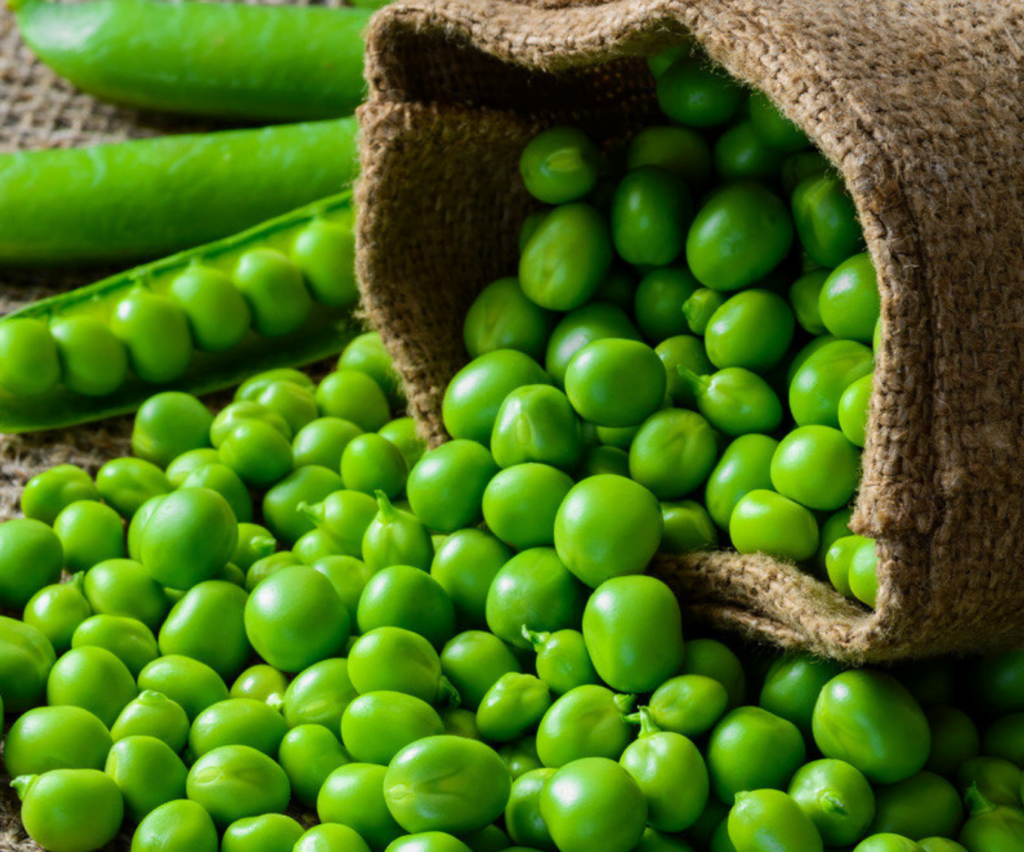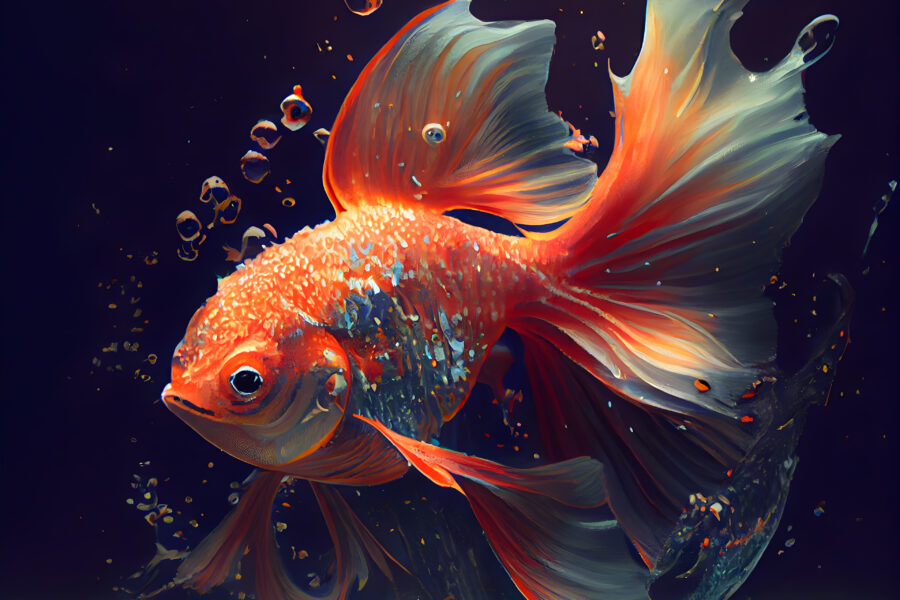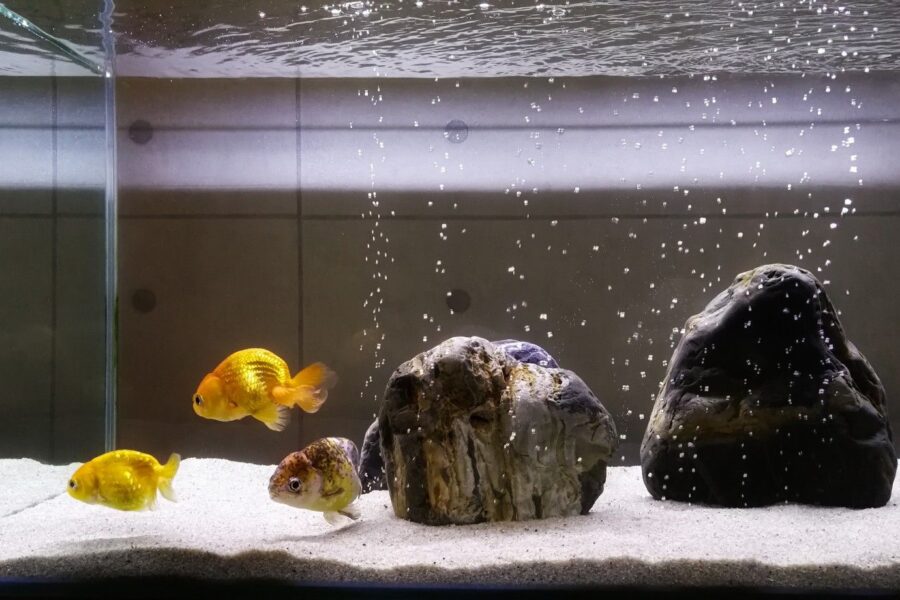
“Goldfish Nutrition 101” might not be the course you expected to take in your adult life, but here we are, and it’s about to get fishy! As goldfish parents, we’re often left scratching our heads about what goes into those little fishy bellies. Are they fans of flakes, or do they prefer pellets? Is there a Michelin-star menu for goldfish we’re not aware of?
Let’s be honest, feeding goldfish is more than just a sprinkle-and-go affair. It’s about understanding the refined palate of our aquatic friends, who, despite their humble size, have dietary needs as complex as their land-dwelling counterparts. They require a balanced mix of proteins, fibers, and vitamins – not just those odd green flakes that turn your tank into a miniature snow globe. So, grab your chef’s hat (metaphorically, of course) and join us on this culinary journey into the realm of goldfish nutrition. It’s time to turn those mealtime bubbles of joy into a symphony of health and happiness!
Why a Balanced Diet is Crucial for a Goldfish

Now, it may seem that a balanced diet for a goldfish is a topic worthy of an eye-roll or a snicker. “They are fish; don’t they just eat breadcrumbs or those colorful flake things?” The reality is, a goldfish needs more than just ‘food’ – they need a ‘diet.’ A balanced diet offers a diverse selection of nutrients and contributes to the overall health, growth, and color vibrancy of our finned friend. One might go as far as to say it makes them ‘glowfish’ rather than goldfish! Jokes apart, neglecting this could lead to a weakened immune system and diminished life span.
Common Misconceptions about Goldfish Nutrition

We need to air out a few common misconceptions about goldfish diets. “Goldfish have a 3-second memory, so they won’t know if they’ve been fed the same thing every day, right?” Unfortunately (or fortunately for our tiny swimmers), goldfish have a memory span of at least three months! Yes, Dory from “Finding Nemo” really set a bad rap for all fish.
Another misconception is that goldfish are the ‘cows’ of the aquarium world. You might think they are always hungry and can eat indefinitely. Not true! They do exhibit constant foraging behavior, but that does not mean their stomach is a never-ending pit. Overfeeding can lead to serious health problems.
Now that we’ve cleared the aquarium water of some common misconceptions, allow me to guide you through the specifics of a Goldfish’s dietary needs. Take out your underwater torchlight as we navigate through proteins, fibers, and that mysterious term ‘vitamin.’ Let’s dive into understanding exactly what the dinner plate of a goldfish should look like. Are you ready to become the Gordon Ramsay of goldfish cuisine? I thought so! Let’s proceed like a goldfish in the water!
Understanding a Goldfish’s Dietary Needs

Removing whatever crumbs of misconceptions you’ve had about goldfish dieting, let’s take a leap into the fascinating universe of their dietary needs. Yes, goldfish need more than a sprinkle of flakes to keep them happily swimming. Let ’em float, and they’ll gobble them up, but does it do them any good? Let’s dive deeper.
Importance of Diverse Diet
In the wild, a goldfish’s diet isn’t made up of a single-course meal. But beyond those aquarium walls lies a sumptuous feast that is both diverse and nutritious. Picture this: Skimming the pond’s surface, they would snap at a mix of insects or larvae, nibble gleefully at aquatic plants, and sometimes do a Pac-man impression while eating smaller crustaceans or even other baby fish.
So, serving up the same food day in, day out, is like offering your goldfish a monochrome painting when they’re capable of appreciating a vibrant Monet masterpiece. A diverse diet gives your aquatic compadre a wider range of nutrients which, in turn, can impact their colour vibrancy, overall health and even their lifespan.
Nutrient Needs: Proteins, Fibers, Vitamins
Now, let’s discuss your goldfish’s nutrient needs. Not to sound like your high school biology teacher, but proteins are literally the building blocks of life, and they’re especially important for your little swimmer to keep strutting their stuff around the tank. Proteins primarily provide the essential amino acids needed for growth and repair and to maintain a healthy immune system.
Buzzing onto fibers, these helps regulate the digestive system of your goldfish by cleaning out any unwanted guests. Think of these as the janitors of your goldfish’s digestive highways.
Lastly, we have vitamins – the vital ninjas who sneak out and fight diseases. Each vitamin has a specific role, so a deficiency in any one of them can lead to health problems in the long run.
Whew! That felt like a marathon of info, didn’t it? But as they say, knowledge is power, and in this case, your power can directly affect the health and happiness of your elegant goldfish. Now that we’ve got this wisdom, we’re ready to conquer the next mountain: choosing the right food for our finned buddy. So buckle up, and let’s explore how to read food labels in the following section. No, don’t worry – no glasses needed!
How To Choose The Right Food?

Picking the right kind of food for your goldfish is like finding the perfect boots on a Black Friday sale – challenging but oh-so worth it. But there’s more to it than simply walking down the pet aisle and grabbing the first brightly colored bag that screams, “GOLDFISH FOOD.”
Choosing Between Flakes, Pellets, and Live Food
Now, let’s unpack those choices, starting with the crowd favorite – flakes. Flakes are convenient, pre-mixed with multiple nutrients, and float on the water’s surface, making it easier for goldfish to chomp down on them. But here is where things get tricky; not all flakes are created equal. Many are overloaded with fillers and lack the essential nutrients your goldfish requires.
Then we have pellets, the sturdy and often healthier cousin of flakes. Pellets come in two varieties – floating and sinking. The sinking kind encourages your goldfish to forage at the bottom of the tank, much like they would in their natural habitat. A caveat though, excess sinking pellets that remain uneaten can lead to tank pollution.
Finally, live food – the goldfish gourmet if you will. Daphnia, brine shrimp, and bloodworms are like the caviar of goldfish cuisine. They’re packed full of protein, but they also carry a risk of disease. It’s best to limit these to treats or add them in a rotation to maintain variety.
Just remember, all of these food types have their pros and cons. Flakes are easy to eat but can lack in nutrients. Pellets offer a more nutritionally balanced profile but can dirty the tank if overfed. Live food gives your fish a tasty treat but can come with unwanted parasites. The secret sauce (pun intended) is variety.
How to Read Food Labels?
Next up, let’s decode the hieroglyphics of food labels. Rhymes with ‘fun’, but it’s often anything but. While it may seem daunting, understanding these labels is essential to ensure your finned friend gets the best meal.
Here’s the trick: look for a protein source, like fish meal or shrimp meal, listed as the first ingredient. This indicates the largest portion of the food. The other ingredients should include various nutrients like carbohydrates, vitamins, minerals, and some form of fiber. Generally, go for foods where fillers like wheat, corn, or soybean meal are not in the first three ingredients.
You’ve also got to ensure the food is specifically labeled for goldfish. While your companion may try to convince you with those googly eyes that they want some of your Betta’s gourmet flakes, remember goldfish have different nutrient needs!
With that, we’ve successfully traversed the world of goldfish dining. The key takeaway? Strike a balance between nutritional content, variety and ease of feeding. Next up, we’re diving into the exciting world of… vegetables? Stay tuned, it’s going to be a crunchy ride in the next section: ‘Supplementing Your Goldfish’s Diet.’ Let’s see how green your goldfish can go!
Supplementing Your Goldfish’s Nutrition

Feeding your goldfish a balanced and nutritious diet isn’t solely about getting high-quality flakes or pellets from the pet store. Yes, that’s a fundamental aspect—but it’s not the whole plate—literally. Alongside the usual goldfish chow, offering an occasional treat of fruits and vegetables can also fascinate their flaky food life and potentially let out a blub or two of joy, not that we can hear it though!
Safe Fruits and Vegetables for Goldfish
Consider fruits and veggies as the dark chocolate in your goldfish’s diet— a delectable yet wholesome indulgence. But before you toss in a piece of your #InstaWorthy brunch into the fishbowl, remember, not all fruits and veggies are goldfish friendly. Some safe options include peas (sans shells), lettuce, cucumbers, spinach, and zucchini. Appropriate fruit options would be oranges, apples, and peeled grapes (hold off on the seedless variant!). Remember to serve these finely chopped or shredded to avoid choking risk.
One more thing, folks! As a rule of thumb, veggies and fruit should form no more than 20% of your goldfish’s diet. So, while your goldfish would appreciate that extra crunch and curiosity, consider them as the occasional treat and not the main course.
Basting in your newfound knowledge of fish-friendly produce, let’s gently swim over to the next wave – diving into the concept of the homemade and natural supplements.
Homemade and Natural Supplements
We all cherish a bespoke, DIY approach towards things—and hey, why should a goldfish’s diet be any different? If you’re someone who glows at the idea of homemade and natural feeds, consider whipping up some goldfish-safe treats in your kitchen.
A homemade gel food combining various proteins, veggies, and vitamins is a readily accepted, highly nutritious supplement to plain old fish flakes. Have a blast experimenting with safe ingredients like shrimp, spinach, carrot, peas, and various fish types. Go wild and whip that mix into a puree, add some unflavored gelatine, and let it set in the fridge. Voila – you’ve got yourself some Michelin-starred fish patties your goldfish will go gaga over.
Likewise, natural, live food options can create an enthralling feast for your fish. Daphnia, brine shrimp, and bloodworms are exemplary choices that cater to your goldfish’s scavenging and hunting instincts while providing a protein-packed dietary supplement. However, be cautious about the source to avoid any potential parasite or disease introduction.
Now you’re equipped with fantastic alternatives to shaking that can of monotonous flaky substance into your goldfish’s stadium. But before the victory lap, remember that serving size and frequency still play a key role. Think of it like the right portion of mac-n-cheese which hits the delicious yet healthy sweet spot without feeling like you’ve swallowed a brick – that’s what we’re shooting for in the next section, Feeding Frequency and Portion Sizes! So let’s dive on!
Feeding Frequency and Portion Sizes

In fables, children’s stories, and perhaps too often in reality, we’ve seen goldfish literally swimming in a sea of fish food. After all, what better way to show our finned friends affection than by showering them with copious amounts of food? Let me tell you a little secret, my fellow fish parents: more is not always better. Let’s dive into the correct portion sizes and feeding frequencies for our watery companions.
Determining Appropriate Portion Sizes
If the food manufacturer’s instructions were made into a Hollywood film it would be titled, “Guesswork: The Sequel.” We’ve all read, “Feed as much as your fish can eat in 2-3 minutes.” Sounds easy, right? The challenge lies in the fact that goldfish would give hobbits a run for their money when it comes to meal times. They can, and will, eat all day if we let them!
Aha! Don’t be fooled by their insatiable appetite. Expert aquarists propose a neat trick: aim to feed your goldfish a portion of food about the same size as their eye. Their eyes, apparently, are roughly the same size as their stomach. Who would have thought?
However, the one-eye-portion rule is not set in stone. The variety of food you offer matters too. For example, goldfish can eat more leafy greens without getting bloated compared with protein-rich foods. So, if you’re feeding them peas or zucchini, it’s okay to be a bit more generous.
Understanding Feeding Frequency
You’re now equipped with the right portion sizes, winner! But how often should we be flicking those tasty morsels into their aquatic banquet hall? A breakfast, lunch, and dinner routine won’t cut it. Why so? Goldfish lack a stomach for storing food – a luxury we land-dwellers take for granted. This means they benefit from several small meals over the day rather than a couple of larger ones.
In practical terms, feeding your goldfish around 2 to 3 times a day should suffice. This mimics their natural grazing behavior and keeps their metabolism ticking over nicely. Remember, food left uneaten is not a sign they’re planning a fishy fast or developing gourmet tendencies. It’s an indicator that you’re overfeeding and should cut back a tad.
In the glamorous world of goldfish gastronomy, knowing the right portion sizes and the best feeding frequency prevents overfeeding, underfeeding, and promotes healthy growth. But, just like humans hoping to stroll down the beach in speedos or bikinis this summer, diet isn’t the only hack to a healthy life. Up next, we will navigate through the most common mistakes goldfish parents make and how to avoid them. Hold on to your fishnets!
Avoiding Common Goldfish Diet Mistakes

Let’s play a mini-trivia game! What’s the most common cause of goldfish deaths? You think it’s a disease, right? Orange you are amazed to discover, it’s actually feeding mistakes! Yes, overfeeding, underfeeding, incorrect food, no variety…the list goes on. In this section, let’s talk about the common chow faux pas committed by well-intentioned goldfish parents and how to avoid them.
Overfeeding
Overfeeding is the equivalent of offering your goldfish the all-you-can-eat buffet, every single day. Sounds like underwater paradise right? Not quite. Goldfish are like little aquatic vacuum cleaners, they’ll eat until their scales burst if you let them. Overfeeding can lead to blocked intestines, fatty liver disease, and a messy aquarium. Not to mention it’s just as hard to find a goldfish-sized treadmill.
The fix is simple. Only feed them as much as they can consume in two to three minutes max, and remember, they don’t require three square meals a day.
So, you’ve mastered the art of not overfeeding. But what’s that? You’re thinking of giving them a little treat, maybe some breadcrumbs or bits of cooked egg? Hold that thought….
Feeding Human Food
As much as your goldfish might seem interested in your chocolate cake, human food is a no-no. Our foods often contain salts, oils, and spices, which are as bad for goldfish as a piranha in their tank. They simply can’t process these ingredients.g
However, there are some exceptions like blanched peas and lettuce. But remember – they’re occasional treats and not the main course.
So, now we’ve established that table scraps are out. That doesn’t mean, though, that your goldfish diet should be as dull as a sunken log.
Not Providing Variety
This might come as a surprise, but goldfish are gourmands; they enjoy a bit of variety in their diet. Feeding them the same flakes day in and day out is akin to having you eat nothing but cereal for the rest of your life. I mean, I love my cornflakes, but a guy’s gotta have his pizza too, right?
Dig into options like brine shrimp, daphnia, and spirulina tablets once in a while to spice up their menu. Your goldfish, unlike my kids, would love to try these new flavours regularly.
And there you have it. Have fun, feed your fish responsibly, and remember, no leftovers from Taco Tuesday!
Frequently Asked Questions (FAQ)
Question 1: Why is a balanced diet crucial for a goldfish?
Answer: A balanced diet ensures that your goldfish gets the essential nutrients needed for their growth, health, and color vibrancy. A good diet also boosts their immune system, helping them fight off diseases.
Question 2: What is a common misconception about a goldfish’s diet?
Answer: The most common misconception is that goldfish only eat flakes. Contrarily, they need a diverse diet – including pellets, live food, and certain fruits and vegetables – to thrive.
Question 3: What are the essential nutrients for a goldfish diet?
Answer: Essential nutrients for a goldfish diet include proteins for growth, fibers for digestion, and various vitamins for maintaining overall health and boosting immunity.
Question 4: What types of food should I consider for my goldfish?
Answer: You should consider a mix of flakes, pellets, and live foods. Each type provides different nutrients, promoting balance and variety in your goldfish’s diet. If you want more information, check it out at Discover the Best Food for Your Goldfish
Question 5: How can I supplement my goldfish’s diet?
Answer: You can supplement your goldfish’s diet with safe fruits and vegetables like peas, spinach, and orange. Homemade and natural supplements – like spirulina or shelled peas – are also excellent options.
Question 6: How often should I feed my goldfish and what portion sizes?
Answer: Feed your goldfish 1-2 times per day, offering only what they can consume within 2 minutes. Overfeeding can harm their health and water quality.
Question 7: What are some common mistakes in feeding goldfish?
Answer: Some common mistakes include overfeeding, feeding human food, and not providing a varied diet. Overfeeding can cause health problems and dirty water, while human food isn’t suitable due to differences in dietary needs.
Question 8: What happens when I feed my goldfish human food?
Answer: Human foods may not only lack essential nutrients required by goldfish but also can include elements harmful to them. Additionally, certain food textures can trouble their digestive system.



